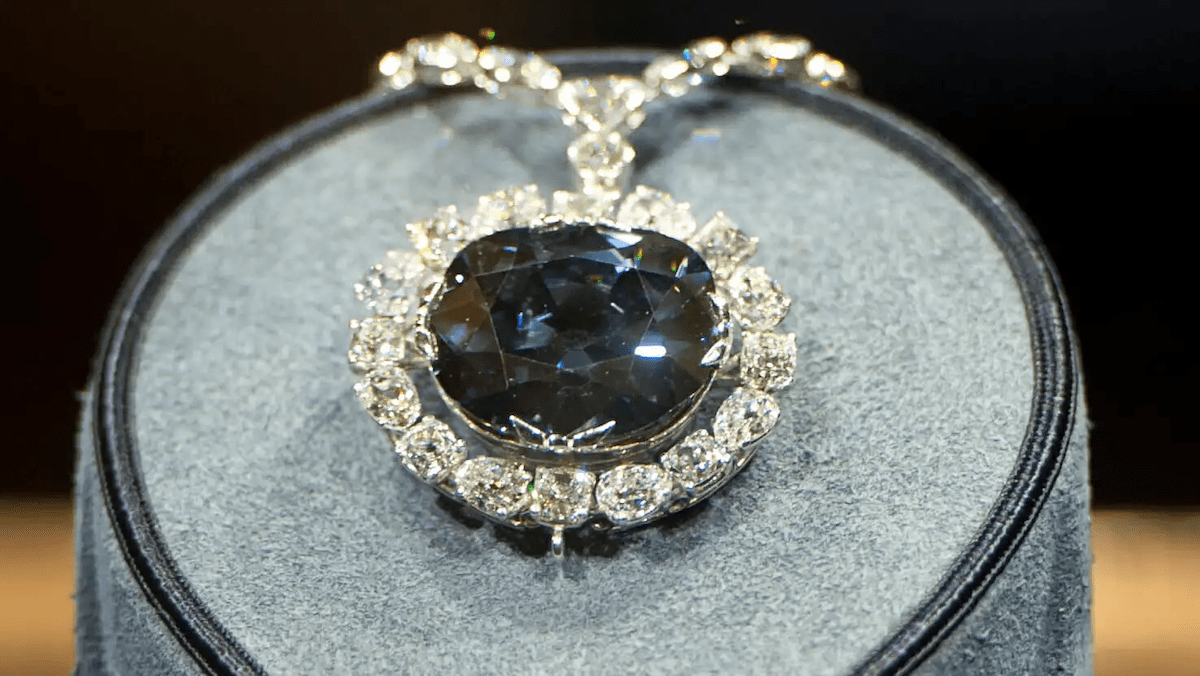Throughout history, certain gemstones have captivated the human imagination, not just for their beauty, but also for the legends and curses that surround them. Among these legendary gemstones, the Hope Diamond stands out as one of the most famous and infamous.
This deep blue diamond, also known as the “Blue Diamond of the Crown” or the “Le Bleu de France,” has been the subject of fascination and fear for centuries. Its storied past is steeped in tragedy and mystery, leading many to believe in the existence of a malevolent curse.
The story of the Hope Diamond begins in the Golconda mines of India, where it is believed to have been discovered in the 17th century. This diamond, initially weighing a staggering 112.19 carats, was later acquired by French gem merchant, Jean-Baptiste Tavernier. The diamond, in its original state, was considerably larger and uncut. Tavernier later sold it to King Louis XIV of France, who had it cut into a 67.125-carat diamond, still impressively large and breathtakingly beautiful.
The belief in the Hope Diamond’s curse can be traced back to the time of its acquisition by King Louis XIV. The Sun King, as he was known, was one of the most powerful monarchs in French history. However, his reign was marred by a series of personal tragedies and hardships. The diamond is said to have brought turmoil to the life of the king, eventually leading to his downfall. This misfortune was seen by many as the first indication that the Hope Diamond was cursed.
From the time of King Louis XIV, the diamond passed through numerous hands and experienced a series of unfortunate events. King Louis XVI and Queen Marie Antoinette, who inherited the diamond, faced the guillotine during the French Revolution. The diamond, however, seemingly disappeared during this tumultuous period.
It resurfaced in London in the early 19th century, and was acquired by the wealthy banker Henry Philip Hope, giving the diamond its famous name. Despite the diamond’s beauty and the prestige it brought to the Hope family, the curse seemingly continued to plague its owners. Marital problems, financial ruin, and untimely deaths became the norm for the Hope family, perpetuating the legend of the Hope Diamond curse.
In 1911, the Hope Diamond found its way to the United States, where it was purchased by the wealthy heiress Evalyn Walsh McLean. She wore the diamond with pride, and regularly hosted lavish parties. Still, her life was not without tragedy. Her son died in a car accident, her husband left her for another woman, and she struggled with financial difficulties.
Even the jewelers who handled the Hope Diamond were not immune to the curse’s effects. Pierre Cartier, who had sold the diamond to McLean, later commented that he had “not let it go without a sigh of relief.”
In 1949, Evalyn McLean died, and the Hope Diamond passed into the hands of Harry Winston, a famous jeweler. Winston generously donated the diamond to the Smithsonian Institution in Washington, D.C., where it remains on display to this day. The diamond’s presence at the Smithsonian has led many to believe that the curse has been broken, as it has not caused any more misfortunes since it arrived there. However, the curse is still very much a part of its lore.
While the legend of the Hope Diamond curse is certainly intriguing, there are skeptics who attribute the misfortunes surrounding the diamond to simple coincidence, and the fact that it has passed through many owners over the centuries. Some argue that the idea of a curse is a romantic embellishment that serves to enhance the diamond’s mystique.
Science has also played a role in dispelling some of the myths surrounding the diamond. X-ray analysis has shown that the diamond’s unique blue color is the result of trace amounts of boron in its crystal structure, rather than any supernatural or malevolent force. However, even with scientific explanations, the allure of the Hope Diamond’s curse endures.
The stories of tragedy and misfortune that have followed the diamond’s various owners only serve to strengthen the belief in its curse. Whether one believes in the curse or not, there is no denying that the Hope Diamond’s history is a testament to the enduring power of myth and the fascination that beautiful gemstones can hold over our collective imagination.

